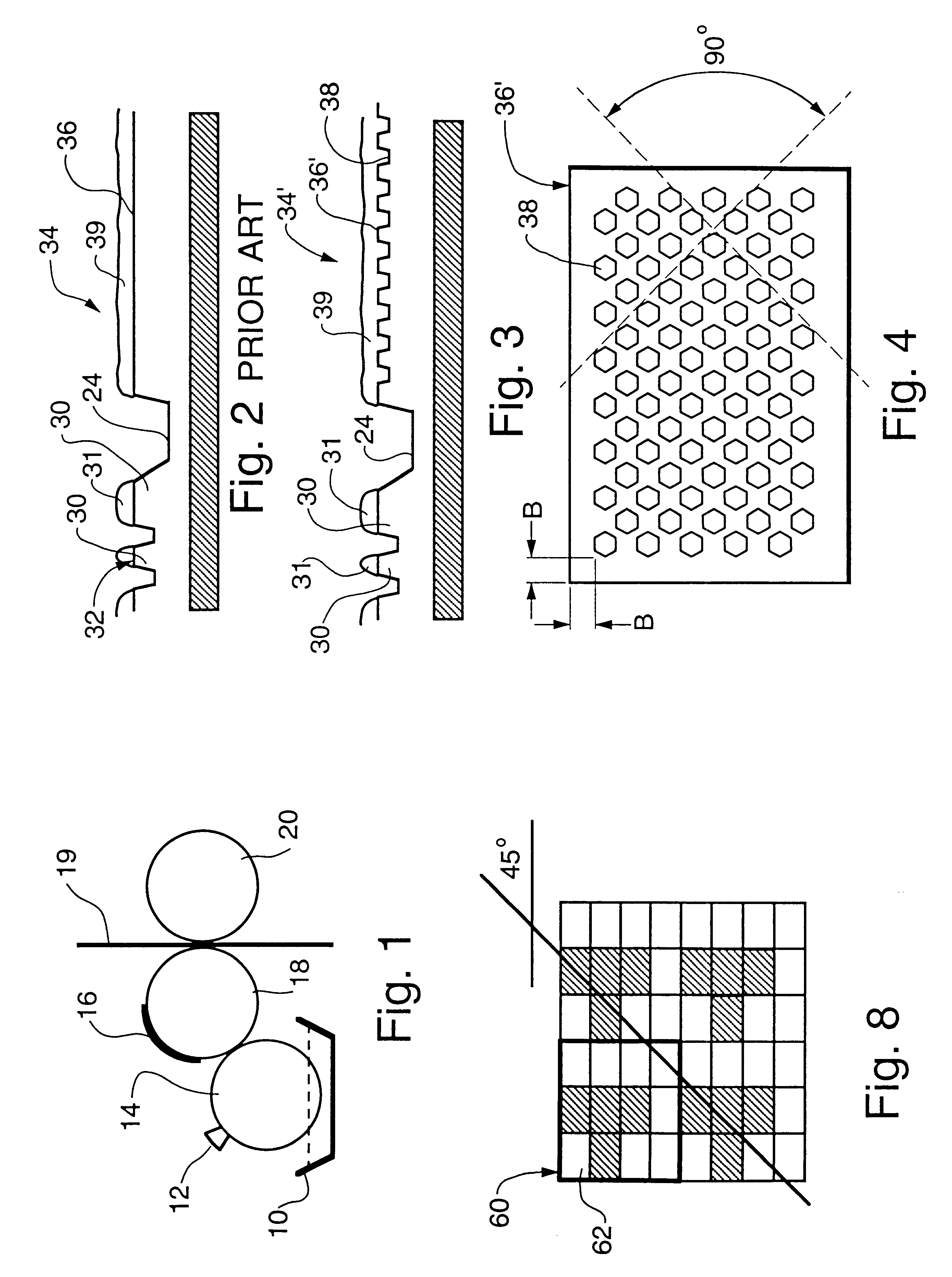Screened film intermediate for use with flexographic printing plate having improved solids rendition
a technology film, applied in the field of flexographic printing plate, can solve the problems of scalloped edges, less saturation and less uniformity than in the market, and the market requirements for the printing quality of images on the packaging are becoming very stringen
- Summary
- Abstract
- Description
- Claims
- Application Information
AI Technical Summary
Benefits of technology
Problems solved by technology
Method used
Image
Examples
Embodiment Construction
)
Throughout the following detailed description, similar reference characters refer to similar elements in all figures of the drawings. Such figures as included herein are for illustration of particular aspects of the invention and therefore are not drawn to scale.
The preparation of a flexographic printing plate is well known technology, and is described, inter alia, in a certain publication entitled "Flexography, principles and practices", 4.sup.th edition, 1991 published by the Flexographic Technical Association Inc. Because of the popularity of photosensitive flexographic printing plates, we will often refer to such plates in the description of the present invention, with the understanding that such reference is only for the purpose of describing typical embodiments rather than to limit this invention to photopolymerizable flexographic printing plates.
In a preferred embodiment of the present invention, a flexographic plate is prepared substantially as described in pages 130 throug...
PUM
| Property | Measurement | Unit |
|---|---|---|
| coverage | aaaaa | aaaaa |
| angle | aaaaa | aaaaa |
| angle | aaaaa | aaaaa |
Abstract
Description
Claims
Application Information
 Login to View More
Login to View More - R&D
- Intellectual Property
- Life Sciences
- Materials
- Tech Scout
- Unparalleled Data Quality
- Higher Quality Content
- 60% Fewer Hallucinations
Browse by: Latest US Patents, China's latest patents, Technical Efficacy Thesaurus, Application Domain, Technology Topic, Popular Technical Reports.
© 2025 PatSnap. All rights reserved.Legal|Privacy policy|Modern Slavery Act Transparency Statement|Sitemap|About US| Contact US: help@patsnap.com



